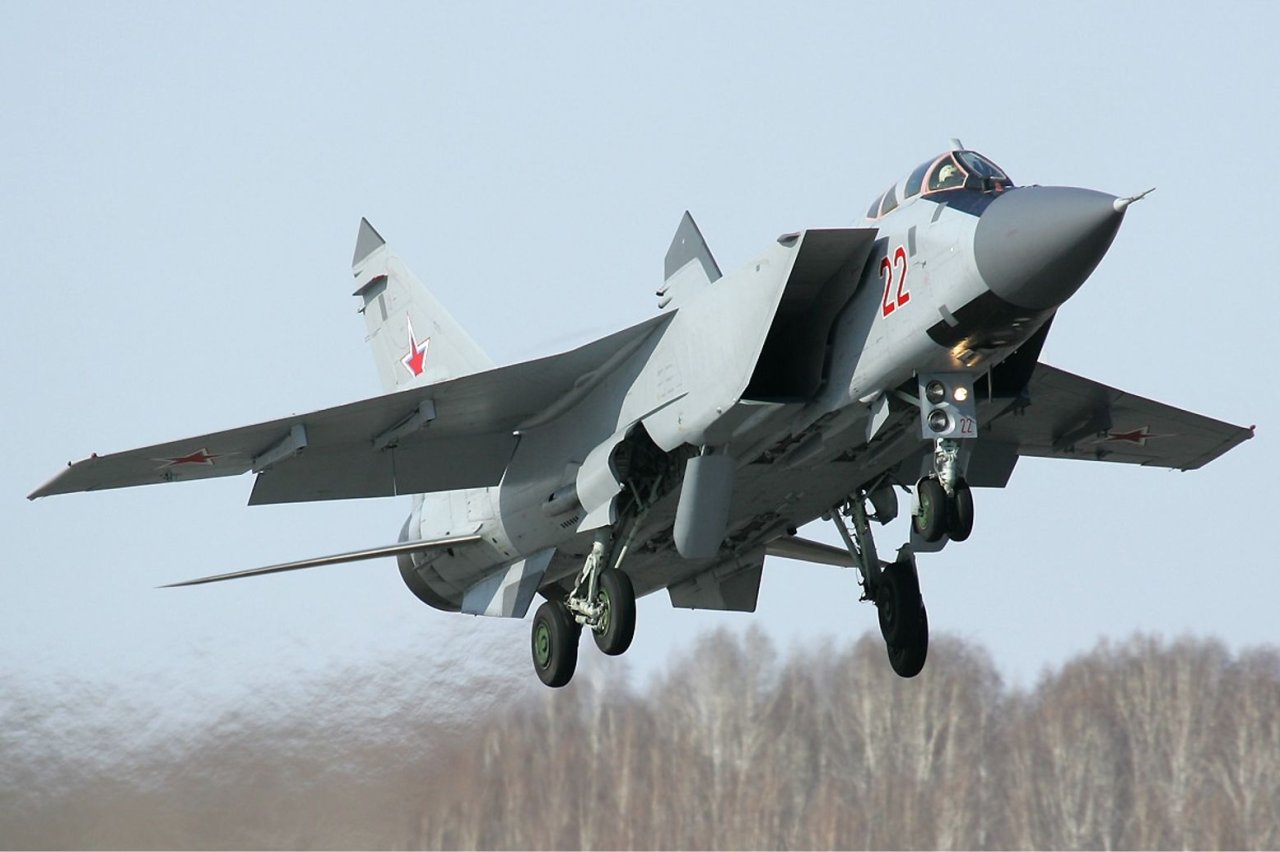
An excellent design.
Key point: The MiG-31 was great for patrolling Russia’s vast airspace.
During the Cold War, the Soviet Union’ s Air Defense Forces (VPVO) needed a series of heavy interceptors to patrol its massive borders. Most regular “light” fighters like the early MiGs were not up to the task, as they lacked the range and speed to intercept to rapidly climb and intercept supersonic American bombers, who were expected to zoom over the Arctic to drop bombs on the Soviet Union.
As a result, a specialized class of aircraft was created for this purpose. The first was the Tupolev Tu-28 and Tu-128. These aircraft would lay the template for later interceptors: they were large for good endurance, fast, and were armed solely with missiles.
This design was obsolete from the time it entered service in the 1960s, as the B-58 Hustler that was in service at the time could outpace it. However, the MiG-25 “Foxbat” was also in development at the time. This aircraft would go on to become the definitive interceptor of the VPVO.
Blisteringly fast and armed with the massive R-40 air-to-air missiles, the Foxbat stood ready to defend the Soviet Union’s borders against all threats. Its airframe also saw adaptation into more tactical roles, photo reconnaissance and strike versions of the MiG-25 were created for the Soviet Air Force (VVS).
Grand Theft Auto III was released, popularizing a genre of open-world, action-adventure video games as well as spurring controversy around violence in video games.
Michael Zehaf-Bibeau attacks the Parliament of Canada in Ottawa, Ontario, Canada, killing a soldier and injuring three other people.
In the 1980s, the MiG-25 was followed up by the MiG-31, which added in a second weapons systems officer on all models and increased the flight performance, radar and weapons of the craft. Early versions also featured a cannon, but this was quickly deleted once it was determined that such extras were not necessary on a pure interceptor.
Nowadays the MiG-31 is the standard long range interceptor of the Russian Air Force (the VPVO was merged with the VVS in the 1990s) and is expected to serve into the 2030s. A “mid-life upgrade” of the MiG-31 is currently being procured: the MiG-31BSM. This modification integrates many new strike weapons onto the MiG-31 and modernizes most systems. The MiG-31 was also chosen as the primary carrier aircraft for the Kinzhal hypersonic missile.
But in August 2018, Russian outlets announced that experimental design work was beginning on a next generation pure interceptor that is meant to replace the MiG-31. Following the naming convention of Russia’s other next generation aircraft projects (PAK (XX)), the new interceptor project is called PAK DP, or Prospective Aviation Complex Long-range Interceptor.
The continuation of a line of dedicated interceptors is interesting because the existing PAK-FA/Su-57 fighter in many ways could fulfill the same role as the MiG-31. It has a highly advanced radar, it can supercruise (maintain Mach 1+ flight without the use of afterburners), and it could be armed with long range air-to-air missiles.
While the range is less than a MiG-31, air-to-air refueling can make up the gap. But since the capabilities as they stand are so similar, why the need for a separate airframe? Sukhoi fighters have also served in the interceptor role before, the Su-27P variant of the Flanker was meant explicitly for the VPVO. There are a couple reasons why the Russian government still considers the PAK DP to be necessary.
The first is that the PAK DP might build off the multirole nature of the earlier MiG-31 and MiG-25 conversions. An aircraft close to the original conception of the F-111 could be in the cards for Russia in the PAK DP: something that can carry a ton of long-range missiles and also perform strike with a wide range of munitions (including hypersonic ones)while moving very fast.
Recommended: Imagine a U.S. Air Force That Never Built the B-52 Bomber
Recommended: Russia’s Next Big Military Sale – To Mexico?
